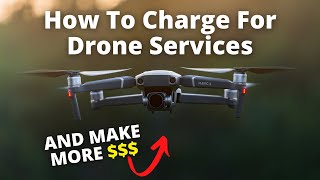Three little-known road safety integrators can make the difference in smart city deployments (Security Business Cover Story, August 2022).
Security companies are willing to sell practitioners more security, portability, and protection. End users bought all the solutions, but in areas other than security: smart transportation systems, mobile IoT i.e. H. Vehicles with Everything (V2X) and safety in city.
Obstacles such as widespread misconceptions about loss of privacy and human sharing have prevented some solution providers in Singapore, Israel and India from providing advanced technology to security providers. Western security at a fraction of the total cost of ownership, but as one of the Edge leaders. What the AI said: The benefits of education are clear. “
As retailers understand the potential of new technology, adding products and services to this market will be easier than you think:
Better monitoring: This can be achieved with sensors, not just visible light – 3D imaging, time of flight (ToF), radar, LiDAR, temperature, temperature and sound, all all in one common sensor.
AI at the Edge: IoT is more than just video surveillance. Machine learning, computer vision, intelligent noise reduction, car collision energy wave analysis, ballistics detection, pollutant/carcinogen detection, and more. city management and business using
It should also be noted that there are much better ways to manage and use AI data than video control systems, and purchasing most equipment from a single vendor can limit flexibility and capabilities. expansion of the system.
At some point, acquisition of these technologies is inevitable — the question is who will deliver first: a security integrator or a transport solution provider.
Going the other way will reduce the total cost of ownership until the integrator presents the redevelopment project to the city or business leaders; instead of the old upgrade method, you should consider using a proven technology that can put intelligence anywhere – – In vehicles or security vehicles or people.
Transportation is the gateway to smart city security
It can be argued that adding sensors to moving objects adds complexity, for example: B. Solves the problem of the weapon carrier moving faster; However, the vehicle-related sensors, processing, and neural networks are mature enough to capture the system and reach the vehicle-to-everything (V2X) level.
Automated driver assistance systems (ADAS) are more tightly regulated by the National Highway Traffic Safety Administration, while life and fire safety systems are more closely regulated by the National Highway Traffic Safety Administration. relevant agencies. The ADAS market is growing at a rapid rate of 25.4% per year; it brings a combination of sensor acceleration and artificial intelligence technologies to the smart city, transportation and security markets.
While this is common in the Asia-Pacific region, privacy restrictions and inclusion channels may be the only barriers to such growth in the Americas. Power is an added bonus, and advances in battery technology have enabled portable or wireless computer vision security webcam as well as all of the sensors above.
Transportation administrators and security administrators should consider where to allocate their budgets or simply buy AI devices temporarily, as these end users are less constrained by physical capital and IT infrastructure budget.
Example: Combined with vehicle sensors, Hailo’s AI inference processing partner MooVita can search an entire mall for pedestrians, cyclists, vehicles with silver sirens or yellow and even active shooters if needed.
Since the platform is integrated, companies or city managers can integrate data collection with legacy VMS systems – directly in traffic, public transport, road control centers iron or consolidated or simply through mobile communication platform.
Body-Worn AI will become a mobile platform
Non-vehicle AI applications are mostly wearable and sometimes robotic applications.
In November 2021, Immervision announced that an ultra-wide lens would be included in the IONODES Percept body camera. The partnership provides security personnel with body-mounted cameras that capture potential security threats in real time in HD with a 180° view.
Eric Tasso, CEO of IONODES, said: “The challenge for many body camera manufacturers in the physical security industry is that video with a narrow field of view and low image resolution fails to capture the images. what’s going on effectively.” .
Pascal Nini, president and chief executive officer of Immervision, added:
“We look forward to innovative developments in the development of high-quality wearable cameras and intellectual image processing systems. artificial.“
Security system integrators looking to partner with companies like Immervision and IONODES will find a technology partner that is not only a recognized leader in the security industry, but also a SoC, software company. , sensors and semiconductors about urban, security and safety. Mobile Award.
Relying on leadership in AI and user experience, security and traffic professionals demand a 16:9 to 21:9 cinematic experience to eliminate FoV or missing pixels at the beginning and end. or corner of the video.
Safety at intersections
Intersection safety and collision mitigation are some of the most challenging visual and auditory detection and prediction scenarios in road traffic monitoring (TMF). Fixed “traffic cameras” are being replaced by products with 2-8 sensors that leverage the processing power and efficiency of neural networks – creating opportunities for city security system integrators to smart today.
According to a study by the German Federal Highway Research Institute, thermal imaging is the most reliable alternative for detecting inductive loops used in signal control technology – helping to identify those Vulnerable road users such as pedestrians and cyclists at or near complex intersections. As security system integrators know, thermal imaging means burning in the dark, inclement weather, high contrast, and city asphalt incinerators.
Teledyne FLIR Traficam AI and TRAFISENSE2 provide integrators with the ability to leverage product knowledge to enter the smart city market.
Under the hood: AI Stream Processor
Imagine a small town or a large company with hundreds of IP cameras. With advances in AI-based video streaming processing, system integrators can provide analytics updates such as positioning (frames), weapon detection, vehicle recognition, mold matching face, pattern detection, occupation (with privacy) and different behavioral objects. Another common request is to crop, retouch, blur, or ensure compliance with privacy regulations in real-time images of people, faces, vehicles, or objects.
AI processor with AI acceleration (such as Hailo-8 M.2) can perform 26 continuous operations per second (TOPS) and process 15 UHD streams from existing IP cameras with standard very low power consumption.
Using an AI processor block that is close to the “natural” fusion point of 10-15 existing IP webcam, it can efficiently connect to other fiber infrastructure networks that support project command centers. rooms in smart cities, transportation networks or corporate campuses. . Infrastructure failures near the aggregation point do not cause service disruption because the AI processor is powerful enough to deliver to different decoding locations; Unified 15:1 AI stream processing reduces acquisition and operating costs across channels.
Now consider expanding this “computing city” supported by a non-GPU PCI card like the Lanner Electronics Falcon H8, which can be configured with 4-6 Hailo 8 AI CPUs. What is the implementation cost? Surprisingly the price is comparable to high-end PTZ IP webcameras.
This model is poised to dominate machine and server integration in almost anything related to sensors and sensor integration—replacing GPUs with lower channel costs and higher performance-per-watt.
An experienced security solution provider can build this system with its own components that manage heat, run fast, and keep cool. The alternative to a complex neural network not deployed to sustain life is unthinkable: fast-moving, fast-moving. Ultimately, however, security companies that understand the importance of simplifying customer operations for success will have a tremendous opportunity in the embedded vision ecosystem.




